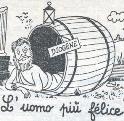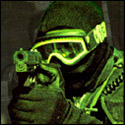|
ACHTUNG ZEPPELIN VIII: Higher Than You've Ever Been in your Life The Story of German Airships in the First World War At the start of 1917, Peter Strasser had finally been forced to face the fact that the British defenses had finally defeated his mighty airships, and a serious re-think was in order. One major factor that caused this is that up until now, Zeppelin technology had ignored the strides the British were making in defenses. Fortunately for Strasser (and this narrative), change in aviation during World War One could be accomplished remarkably fast. In the period this post covers, from January 1st to the end of June 1917, both sides would deploy new tactics and technology not once, but several times, as each side struggled to gain superiority over the other in the battle of flammable skyships vs. airplanes with flaming bullets. After the disastrous series of attacks in the last post, Strasser pleaded the Naval Airship Division's case to Scheer. While Strasser personally still believed the knockout blow could be dealt by Zeppelins, he defended the possible continuation of attacks by arguing that Zeppelins tied up enormous resources in Britain that would otherwise be used on the Western Front. While Airplanes could be used to bomb a slice of England, only Zeppelins could appear in the skies over anywhere in the UK. If this sounds like a stretch, an authority no less than the offical British war historian was later to agree with Strasser: ...had the Zeppelins been built and maintained solely for the raids, it must be admitted that, from a purely military standpoint, they would have been more than justified the money and ingenuity that went into their building. […] By the end of 1916 there were specifically retained in Great Britain for home aircraft defense 17,341 officers and men. There were twelve Royal Flying Corps squadrons, comprising approximately 200 officers, 2000 men, and 110 airplanes. The anti-aircraft gunners and searchlights were serviced by 12,000 officers and men who would have found a ready place, with continuous work, in France or other war theaters. Strasser won the argument, and then faced his next challenge: finding a way around Britian's aircraft defenses. Loose tons of weight by using this one weird trick The two ways that were hit upon to put Zeppelins back in the game were to make them faster, or to make them fly higher. The former was examined in design studies, but the speed boosts (up to 75 mph in one case) required the completion of a new gearbox, didn't add any to the ceiling, and the hypothetical airship could still be hit by flak. Thus, Strasser turned to altitude as the answer. A meeting between naval architects, the Zeppelin company engineers, and Strasser happened on the 27th of January to discuss this new direction. Strasser wanted to achieve a minimum altitude of 17,500 feet with a war load, ideally 20,000. The way to do this as everybody in the room knew was by lightening the ships and increasing the useful lift. The designers were keen on some of Strasser's ideas; removing the defensive machine guns, lowering bomb payloads, and above all redoing the clunky rear gondola and its prewar gearbox. It was when Strasser started talking about thinning out the superstructure, removing engines, and removing ballast and fuel that the engineers became a little leery. It was clear that Strasser wanted to meet his height (and thus his attack) goal, to the exclusion of all other considerations. “A single ring fracture is no calamity” Strasser at one point said, to which the engineers retorted that if a single hull girder broke, Strasser would then claim the entire structure too weak. The engineers were also concerned with the reduced power a 5 engine airship would have to fight winds in the upper atmosphere. But as Strasser said in the letter which sparked the meeting “In order to reach great heights and to be able to attack, one should not try to be careful and should work to a low margin of safety.” The engineers also suggested that with the new emphasis on altitude, perhaps what was needed was two classes of airships: a height-climber, and a smaller, faster airship for scouting. Strasser, thinking of bombing capacity, among other reasons, maintained that the one class does everything approach was best. The revisions that came out of this meeting were significant. In addition to weight saving, there was to be a new emphasis on streamlining the hull, so that the airship could make the most out of the reduced power. Strasser returned to Nordholz (presumably, with a sparkle in his eye) and immediately tried some of the new slimming techniques on L 35 and L 39. Even with just some of the bomb releases and the machine guns removed, L 36 reached 16,000 ft. L 39 stopped her engines at 16,400 ft, and then rose to 17,700 ft. The “height-climber” idea was looking more and more practical. At the same time, the war on the sea was evolving. With the support of the Army's top commanders, Scheer had finally gotten permission on February 1st to wage unrestricted submarine warfare on British shipping. (This decision was taken in the same spirit as airship lightening: the Germans gambled that while the move would bring America in the war, it would take them a year to deploy, and Britain could be starved in six months.) The British retaliated with intensive mining operations; so intensive in fact that the Germans didn't bother trying to sweep all of them. They instead kept three channels clear, departing and returning U-boats often being escorted by a destroyer. The Zeppelins were once again quite handy in the naval recon role; airships could keep an eye out for enemy ships when U boats were in transit, and could also spot mines missed by the sweepers. So while the surface fleet was now resigned to a secondary role, the naval airship arm still found its services regularly needed. On February 28th, Martian Dietrich commissioned the L 42, the first ship constructed with the new 'lighter' ideas in mind. Though essentially an R-class, the new ship had some 80,000 pounds of useful lift; 56% of total lift. It also featured new, more streamlined gondolas, and the forward lateral engines were given a kind of engine-pod: a streamlined aluminum shell was fitted over the engines, one that had enough space for the crew to climb down into for maintenance and repairs. L 42 also featured new camouflage paint (why it had not been tried before, I've no idea.) Sadly for those wishing for the ultimate insanity of a dazzle-camouflage Zeppelin, the scheme was a simple solid black underside. The hull had been doped tight, and the mesh on top of the airship had been filled in (leaving escaping hydrogen nowhere to go, which inevitably would cause accidents.) Strasser went with Dietrich on the altitude test flight, and L 42 managed to get to nearly 20,000 ft, still carrying ballast to represent bombs. Strasser also got to experience the air at 20,000 ft. Dietrich remembers Stasser climbing down the control car and gasping “One-has-to-talk-slowly-up-here!” By April the new gearbox was ready, and the rear gondola was transformed into a sleek engine pod. The old gondola carried three engines: one driving a prop on the back of the gondola, the two others driving the rear lateral props via heavy crankshafts. The new pod featured two engines driving a single prop, and this simplification saved several tons by itself. By the end of August 1917, L 53 went into service, which combined all these innovations with a lightened superstructure. Now so lightly built at low altitude and flank speed she could warp her hull, L 53 lifted 89,000 pounds, and her useful lift had been boosted to 62.7 percent of total lift. Strasser, as said, kept the machine guns off during raids on Britain, but changed his mind and allowed some defensive armament to be carried when doing naval recon. He also pushed work forward on a rapid fire 20mm cannon with superior range to the British .303 machine gun, but the cannon was not mounted on airships till the final summer of the war. Work also began on new “altitude motors” with extra large combustion chambers that would not have their power sapped by thin air. So the height-climbing idea was an enormous success. At a stroke, these changes negated all the British defenses. As long as an airship remained at high altitude, no gun could touch it, nor could any fighter shoot it down. The hand-me-downs that the RFC flew topped out at 13,000 ft, and while there were eventually fighter planes that could reach 20,000 ft, as always the Front had first priority, and the home defense squadrons were required to make do. And these changes were thought up and implemented in just a few months, a tribute to German ingenuity and organization. There were costs to be paid, however. Strasser was fairly casual about the whole altitude adjustment thing, but the truth was he was sending his airships into the sky above terra incognita . Nobody had experience operating at such extreme altitudes for extended periods (as a matter of fact, in 1916 the record for altitude was only 26,000 ft) and the problems of doing so would often defeat the Zeppelinauts. For starters, let's talk about cold. At 13,000 ft, airship crews experienced - 40 C; at 20,000 ft this could drop another twenty degrees. No heaters were ever installed on Zeppelins, so the crew dropped its naval uniforms in favor of fur-lined flight suits and helmets, which crews sometimes supplemented with newspaper insulation. The cold affected the Zeppelins themselves, as well. Cellophane windows fitted at the factory split open, control cables grew slack, and engines reliable at 13,000 ft frequently broke at the new higher altitudes. Water ballast froze even with a dose of glycerin; Strasser came up with the idea of replacing some of the water ballast with sand. Water at high altitudes also has a much lower boiling point, and improperly sealed radiators would sometimes boil away all of their water. There was also the matter of air. The Germans foresaw this problem at least, and early on issued personal canisters of oxygen to airship crews. The oxygen frequently was contaminated with an oily taste so strong it turned the stomach, and lead at best to vicious morning-after headaches after a mission. Also, airship men being men, they were all “I'm so tough I don't even need that stuff” which lead to a lot of crewmen literally unable to do anything. Captains had to order the use of bottled air, even putting the command on engine telegraphs. The oxygen was soon replaced with 'bombs' of liquid air, which agreed much better with the crew, though it seems that often they were trading altitude sickness for hyperventilation on this account: “One did not either feel either hungry or thirsty after (taking liquid air), but extraordinarily alert, and far from experiencing any feeling of fatigue one felt one could knock down a brick wall.” While the supplemental air kept an airship crew working, it didn't make that work anything less than exhausting, especially as on raids, when Zeppelins would have to travel in the upper airs for up to eight hours at a time. A few tasks aboard the airships were manual labor intensive, with ballast and fuel often having to be pumped or carried by hand, a murderous job in the upper atmosphere (not to mention when the ship was angled up 20%). The cold and the thin air killed any hunger on these long voyages, which sapped a crew's endurance all the more; the Navy medical men issued chocolate to compensate. Speaking of flight medicine, upon joining the Navy, future airship crews were given through physicals, but nothing was done to keep an eye on the crew's health post-exam. One rear elevator man dropped dead from a heart attack on his first high altitude flight, the victim of a undiagnosed heart condition. Even going to the bathroom was an ordeal. If you were in the control gondola, the round trip to the head and back was some 800 feet, with some ladder climbing at the start and at the end.  BTW, here's a picture of that ladder Weather in the upper atmosphere was also essentially impossible to forecast. The most western weather station the Germans had was in Bruges, which meant raiding Zeppelins over Britain sometimes encountered full gale force winds opposing them. With the power loss thanks to the missing engine combined with the loss of power thanks to altitude, the new height-climbers were often helpless before the will of the weather. Also, at 20,000 ft, the only clouds above you are the cirrus, with everything else now below you. Even the old raiders often struggled in vain to find a target at night; high altitude flight doubled these navigational difficulties, and airships had to rely on the faulty direction-finding radio. The radio traffic generated when 8 airships were lost over Britain would often render even this flawed system useless. The effect of these problems was to make the Zeppelin as a strategic bomber kind of a babby's first Wunder-Waffen: a larger psychological threat then a physical one. Striking Back at the Empire The airships had an uneventful time scouting the German Bight, and it was not until March 16th that a raid was organized with the new Height-climbers. L 35, L 39, L 40, L 41, and L 42 were to take off and hopefully bomb London. Bomb loads were roughly half the old maximum: 3500 - 4000lbs. The weather all day had been mild spring weather, but as night fell, a violent depression came in from the North-west, and the problems began. The airships encountered 45 mph winds, which made progress difficult. Having no landmarks to use, the Zeppelins tried to use the radio signals, only to find 1) the British were jamming the signal, and 2) One of the three stations failed, and the remaining two differed by such a tiny angle as to make them even more useless. The wind pushed the airships inexorably south, and soon the entire squadron was utterly lost. Two ships, L 35 and L 40, claimed to have bombed London, but actually bombed empty fields in Kent. L 39 damaged two cottages under a similar impression. L 41 and 42 found themselves beset by problems and didn't get a chance to drop anything before the wind had swept the entire squadron over the English channel into France. L 42 (with Strasser on board) managed to return to Nordholz. Somewhat dismayed to find themselves on the wrong side of the western front, the rest of the ships slipped over the lines, returning to whatever bases their fuel would allow. All the airships had some engine breakdowns, which made the wind an even greater problem, but L 39 evidently had the most. Driven nearly all the way to Paris, L 39 struggled against the wind for 2 hours but had another breakdown, which at dawn left her drifting over Compiegne. Spotted by AA gunners, she was shot down after a long barrage. Caught on fire, L 39 exploded and spewed her hapless crew overboard. The raid was considered a success by the Germans, even though a airship had been lost and the grand total of damage done was $63. The Germans thought London had been bombed again by airships that flew above aircraft, and the British were intensely annoyed that their Zeppelin defenses had been bypassed. A month later, on April 23rd, the Naval Airships scored a unique victory (and I mean that, it is literally the only time it ever happened), when a Zeppelin captured a surface ship. L 23 was scouting off the dutch coast with a Captain Bockholt at the helm,when she spotted a Norwegian Schooner on a westerly course. This wasn't too unusual, but the fact that the crew abandoned ship into lifeboats at the airship's approach was. Settling alongside, a few crewmen go aboard the Schooner and discover she has a cargo of wooden props for trenches; in other words, war-making materials and thus contraband. The crew in the boats confirm that they were bound for West Hartepool, and Bockholt sends a prize crew aboard. While it made for a great story, the capture of sailing ship via airship was not repeated; while Bockholt was praised in public, in private he received an upbraiding for risking his Zeppelin like that.  I could have sworn there was a real picture of this, but this is all I could find. Meanwhile, the British were laying plans to strike back at the Zeppelins. While the airships bombed Britain as altitudes currently unassailable, naval scouting was still done at much lower altitudes, with airships sometimes descending to 200 ft for mine-spotting. With that in mind, the British tried two new tactics. The first was equipping cruisers and battleships with Sopwith Pups, the Pup's catapult being mounted ontop of a gun turret. Like the CAM ships of WW2, the plane was a one-shot device; after performing a mission it would ditch in the sea. The British Naval aviation wing also received new seaplanes from America: the Curtis R.12 flying boat. Large enough to carry a radio and enough fuel to patrol the German Bight, four of these planes found themselves detached to Great Yarmouth for Zeppelin hunting. In addition to flying low, Zeppelins on a recon mission used their radio a lot, radioing course corrections, the weather, and anything they happened to see. The British intelligence establishment used equipment that in the next war I suspect would be called HF-DF – at any rate, they could triangulate a Zeppelin's location via her radio signals, and vector an airborne Curtis flying boat to intercept.  The Curtiss flying boat. On the early morning of May 14th, L 22 was dispatched on the now standard reconnaissance flight after a week of bad weather. The Curtis H.12 took off in response, with a Flight Lt. Galpin and Flight Sub-Lt. Leckie at the controls and two petty officers manning the guns. The nose of the H.12 had twin Lewis machine guns firing incendiary ammo in a turret arrangement. As early dawn broke over the North Sea at 6 am, the flying boat spotted the patrolling airship at 5000 ft, and got within a half mile before before L 22 spotted her attacker. Venting ballast and climbing fast, Galpin and Leckie closed to point blank range and let the Zeppelin have it with both barrels. Both guns jammed just before they could empty their magazines, but as you might figure, it was enough to send L 22 burning down into the sea. L 22 sent no signal before her demise, and the Germans had no idea what had caused her end. On May 23rd, the Moon was new and six airships were sent to attack “south, target London.” In the new attack environment, this was more a request than an order. To give you an idea of how bad this problem was, consider L 43 that night. She claimed an attack on London after beating up against the wind from 20,000 ft., but actually attacked the fields outside Norfolk. Strasser went along on L 44, and got an eyeful of the new operational difficulties his skyships faced. While crossing the coast, two of L 44's engines failed, but London was still aimed for as the conditions were “unusually good.” Another engine failed shortly after this, and the airship began to loose altitude. All the bombs were dropped, hopefully on Harwitch, and then the last two engines died. What's more L 44's decent quickened, and she was approaching those altitudes that airplanes could reach. Ballast, Radiator water, spare parts and other loose equipment went overboard, as Strasser had an outburst of rage about their predicament. Supposedly Kptlt. Stabbert responded with “Commander, don't shout so loud! The English will hear you down there!” After drifting for nearly an hour, one engine was fixed and L 44 turned for home. Unfortunately, all the ballast and trimming material gone, the airship angled up 20 degrees and climbed to 21,000 ft, and flew that way until 10 AM the next day. Then two more engines were coaxed to run, and L 44 made her way back to Nordholz. The engine trouble on the way back was due less to mechanical problems and due more to no water being left for the radiators. There were more close calls that night; L 42 had the worst (non-fatal) experience yet with storms. On the way back from Britain, the black wall of a thunderstorm loomed over L 42, up to 23,000 ft. With a pressure height of 19,400 ft, L 42 had no choice but to plunge into the boiling clouds. The ship was struck by a lightning bolt, giving a severe shock to a crewman in the port midships gondola. Ten minutes later, another lightning bolt struck L 42, striking the nose and exiting the tail. The sail-maker on patrol in the keel reported the lighting stroke made the gas cells translucent. A third, weaker bolt of lighting struck fifteen minutes later. The ship made it back to Nordholz, and the total of the damage done were small holes in the outer cover and a singed rear port propeller. And L 40, on the return from the raid, was nearly intercepted by Galpin and Leckie in their H.12. Patrolling the German Bight looking for returning raiders, the flying boat crew was surprised by L 40 as she exited a cloud right in front of them. L 40 made the proper signal flares to the flying boat, and then by venting ballast managed to slip away almost immediately into another cloud. The captain, Sommerfeldt, reported some sort of short-range seaplane had taken off from the water to attack him. The Naval Airship squadron remained oblivious to the new threat stalking them. The new raid managed to kill one man, and did $600 worth of damage. On the report of the attack, the Kaiser himself noted in the margins that he thought the 'day of the airship had passed for attacks on London, and that Zeppelins should be used as scouts for the fleet and for strategic reconnaissance, not bombing attacks.' On June 5th, L 40, again under Sommerfeldt ,was one of those scouting missions in the German Bight when Galpin and Leckie attacked her again. This time, L 40 was more aware, and escaped by climbing to 10,000ft. Sommerfeldt once again in his report assumed the plane had been launched from a nearby ship, despite remarking that 'extraordinary visibility gave a uninterrupted range of 40 sea miles' revealed no ship. On June 14th, three Zeppelins took off to cover mine-sweeping operations. L 43 was shot down by a H.12 out of Great Yarmouth, and all her crew were killed. All the two other Zeppelins on patrol knew was that L 43 didn't return her map orders. L 46, meanwhile, continued her assigned patrol. The intrepid Galpin and Leckie were in the air as well, and a little past 8 am spotted L 46 at 10,000 ft. Evidently the flying boat was also spotted, as L 46 immediately vented ballast and climbed to some 18,000 ft, way above the flying boat's ceiling. The H.12 pursued for a time, firing off several magazines hoping for a lucky shot, but unable to climb past 12,000 ft, made L 46 an impossible target, despite her 650 ft length. After the two remaining airships returned, Strasser decided that this plane had shot down L 43 and attempted to destroy L 46. New orders went out regarding naval reconnaissance flights in the western sectors: now they were to be done at a minimum of 4 km up (13,000 ft). This was a significant victory for the British; and one that they accomplished just with four flying boats. While the Zeppelins still patrolled, their effectiveness was greatly reduced. No longer could they spot mines or submarines, and people who remember previous 'spergy posts will recall airships sometimes had trouble in the North Sea spotting ships at 1000 ft, let alone 13,000. Things that bother you, never bother me, I feel happy and fine!  On June 16th, another raid was planned. This was very unusual, as Kptlt. Hirsch, now long dead, had warned Strasser that Britain was far enough north that near the summer solstice, proper darkness did not fall, making raids extremely. It's not quite clear why Strasser had decided to ignore this sage advice: maybe he thought that the greater light would help in navigation. Of the ships assigned to the operation, two had mechanical problems and couldn't take off, and two more had mechanical problems on the way and returned early. Only L 42 and L 48 actually made it to England. L 42 was captained by Kplt. Dietrich, who arrived off the English coast by 8:30 PM, but was kept away by several thunderstorms. Planning to fly over Dover and attack London from the south, Dieteich found on his approach over Dover at 11:30 that the headwind freshened, and changed his plan: he would lighten L 42 by first bombing the city below. It then took another two hours to get to a windward attack position. Giving up on raiding the capital, L 42 dropped all her bombs. At the first explosion some 20 searchlights snapped on, but the black camouflage paint worked: even when by chance a spotlight fell on L 42, it was impossible to hold that spotlight on her. L 42 then scored the first real success of the height-climbers as bombers: her 300 kg bomb hit a munitions store, setting off a series of explosions and fires that ended up destroying an entire naval base. Several aircraft tried to intercept L 42 on her way home, but her extreme altitude made all such efforts futile. All very good. L 48 was captained by a Kptlt Eichlir. L 48 crossed the coast at the same time L 42 did, but had engine troubles that kept her loitering never the coast until two AM. Since now it was far too late to bomb London, L 48 targeted the Naval base at Harwitch instead. (Dropped bombs were thought to hit the base squarely, but surprise! fell on empty fields five miles north of that.) Then Eichlir made his mistake: he descended to 13,000 ft and called for bearings from the direction-finding stations. His compass had frozen in the upper atmosphere, and L 48 was lost. On the exceptionally bright night, the Zeppelin had been visible even at 18,000 ft, and when L 48 descended, she came under attack by AA, and soon enough, fighter planes. Soon, L 48 was aflame, and visible to L 42 some seventy miles away. Dietrich radioed ahead the sad news to Scheer, who met L 42 when she landed. L 48 had been the newest airship built, with a veteran crew, and Strasser's new operations man, Viktor Schutze had been aboard, so her loss had been (yet another) mighty blow to Strasser. Strasser demanded details from Dietrich, at one point saying “The English have no real defense against our airships!” Dietrich retorted “But it was a plane! I saw it myself!” Evidently Strasser was possibly in denial over the effectiveness of airplanes; Dietrich also relates that Strasser did not want to hear his subordinates reporting airplanes over England. “Sometimes he would argue with them and suggest they were overly nervous and imagining things.”  The wreck of the L 48. What Strasser and Dietrich didn't know is that L 48 had survivors. Though in this posts this has happened once or twice before, I think it was the only time it happened to airships shot down over Britain. There were three: a machinist's mate named Wilhelm Uecker who was badly wounded and died on armistice day, 1918; the airship's XO, Lt. Otto Mieth, who escaped the wreck with just two broken legs, and Machinist's Mate Heinrich Ellerkamm, who amazingly escaped with superficial burns. My primary source interviewed him in the 1950s, when Ellerkamm was 66. Here now is the account of a man who survived a hydrogen airship catching on fire: (Note: Ellerkam's accout starts at his station, the port midships engine car.) I thought we were over the sea on our way home. It was time to check the fuel supply for my motor – I had pumped petrol up to the gravity tanks above the gondola some hours before – and I told my helper to take over. There was a faint light of dawn in the east, and as I climbed the ladder, suspended halfway between the gondola and the hull, I heard a machine gun firing. There below us, dim in the light of dawn, was the English flyer. I stepped on to the lateral gangway inside the hull; we were below pressure height, and I could look aft. There was another burst of gunfire, and I could actually see phosphorous bullets tearing through the after cells. I watched with a horrified fascination. This I knew must be the end! Any one of those bullets could set our hydrogen on fire. There was an explosion – not loud, but a dull “woof!” as when you light a gas stove. A burst of flame. Then another explosion. One gas cell after another was catching fire over my head. My first thought was not to be crushed under the wreckage in case we were over land, so I climbed farther up among the girders. Flames were dancing everywhere, and the heat was overpowering. My fur coat collar caught fire; I tried to beat it out with my hands. The weight of the big two engine gondola aft was dragging down the stern, the ship tipped vertically and down we plunge, a monstrous roaring banner of flame reaching hundreds of meters above my head, and the wind whistling through the bared framework. I noticed the draft was driving the flames away from me. But it was only a temporary respite. I thought of jumping, and I remembered Korvettenkaptian Schutze, when he was our commander, saying “Better to smash against the earth and perish at once than to burn to death trapped in the blazing wreckage on the ground.” No, it isn't true we carried poison, or pistols to shoot ourselves when the ship caught fire. Hand guns were forbidden. I was still arguing with myself when a light appeared below – whether on land or sea I could not tell. Suddenly there was a terrible, continuous roaring smashing of metal as the stern struck the ground and the hull structure collapsed beneath me. I found myself on the ground with the breath half knocked out of me, the framework crashing down on top of me, fuel and oil tanks bursting on impact and their burning contents flowing toward me through the shattered wreckage. I was trapped in a tangle of red hot girders, the heat roasting me alive through my heavy flying coat. If I had lost consciousness I would have burned to death. But I could still think and move, and with all my strength I forced some girders apart – I never felt the pain of my burned hands until later – and burst out of my prison. I fell full length on the cool, wet grass. In front of me, frightened horses were galloping away across the field, their tails in the air. I heard the roar of an engine, and saw a British plane circling low over the wreckage, the pilot waving to me. Already it was almost full daylight. The fire was roaring at my back. Staggering to my feet, I turned back to the wreck. Kvkpt. Schutze had jumped, as he always said he would; he was dead, his legs buried up to the knees in the ground. English civilians helped me drag Lt. Mieth, still alive, out of the wreckage of the radio cabin in the control car. One of them took me to his home, and I collapsed, unconscious. Later I asked to be taken to see Mieth, but it was forbidden. I can't explain how I survived. All I can say is that my gondola was 100 meters from the tail cone, and the tail structures broke the force of my fall, while the bow remained intact and did not fall on me entirely. Strasser remained depressed for days afterward, a temporarily defeated man. He then invited the captains to a private dinner, where Dietrich and others reaffirmed their faith in the 20,000 ft solution, which cheered Strasser a bit. Even though victory seemed ever further away, airship operations against the enemy would continue. Strasser knew what all Germany knew: despite his gloomy feelings, the war, like the show, must go on.  The hydrogen gas plant at Nordholz. The large amount of stuff you needed to run an airship vs. an airplane was one of the reasons rigid airships were to eventually fall out of use.  The new two engine gondola, minus a skin of canvas.  The new camo job. In hindsight, a change they could have made in 1915.  A later control car. The rudder is the front wheel, the side wheel is for the elevators, and the levers at the right are for ballast.  Two of the new height climbers returning from a raid. Nebakenezzer fucked around with this message at 05:26 on Jul 30, 2012 |
|
|
|

|
| # ? May 21, 2024 16:53 |
|
We took a trip the the Seattle Museum of Flight today, here are a few highlights:          
8th-snype fucked around with this message at 06:50 on Jul 30, 2012 |
|
|
|
HeyEng posted:Regardless of your stance on the Raptor or not, it photographs well. Here's a few photos from my day at the airshow where I should've worked more and not hosed off with my camera. I'll post other planes later. The Raptor looks sleek in the air but on the ground just looks like a big fat toad. The Eagle on the other hand is sexy on the ground and in the air.
|
|
|
|
HeyEng posted:Regardless of your stance on the Raptor or not, it photographs well. Here's a few photos from my day at the airshow where I should've worked more and not hosed off with my camera. I'll post other planes later. Saw a great display by an F-22 (and a heritage flight with the F-22 and a P-51) at the Andrews open day last month. Shame the Raptor just got comprehensively smoked by German Typhoons: http://www.wired.com/dangerroom/2012/07/f-22-germans/ I guess the question is, do we believe that US pilots will be allowed to actually engage BVR targets or will ROEs demand visual identification to make sure the jet jockeys aren't shooting down airliners by mistake?
|
|
|
|
Dr JonboyG posted:Shame the Raptor just got comprehensively smoked by German Typhoons: http://www.wired.com/dangerroom/2012/07/f-22-germans/ Comprehensively smoked is a tad hyperbolic; comprehensively smoked in close dog-fighting is more accurate. It makes sense tactically too: "So, your plane is optimized for shooting at things long range? Then let's close to visual and take that advantage away." Embarrassing, since the USAF has been telling everyone for years the Raptor is like having an F-15 in 1937. Surely this bodes well for the F-35
|
|
|
|
Not to start F-22 chat again, but that article is pretty goddamn stupid. A Mig-15 would be great at zero range with an F-22 too, it can turn great! It's like the F-22 was designed specifically to never be in those situations or something! Hurf hurf. It's just the germans trying to get good PR for the Typhoon program, which is a horrifically overpriced boondoggle of its own. Pretty sure Germany still has 30+ of the useless, unupgradable Tranche 1 Typhoons that are essentially $130m trainers and paperweights at this point.
|
|
|
|
Cygni posted:Not to start F-22 chat again, but that article is pretty goddamn stupid. A Mig-15 would be great at zero range with an F-22 too, it can turn great! It's like the F-22 was designed specifically to never be in those situations or something! Hurf hurf. It's just the germans trying to get good PR for the Typhoon program, which is a horrifically overpriced boondoggle of its own. They are also awesome enough to quote beyond visual range kill statistics from 1950 and onward, as if they are using ancient missels and radar systems. Selective journalism!
|
|
|
|
China's new AEW&C plane doesn't look familiar at all. Nosiree. 
|
|
|
|
Cygni posted:Not to start F-22 chat again, but that article is pretty goddamn stupid. A Mig-15 would be great at zero range with an F-22 too, it can turn great! It's like the F-22 was designed specifically to never be in those situations or something! Hurf hurf. It's just the germans trying to get good PR for the Typhoon program, which is a horrifically overpriced boondoggle of its own. I'm not going to make this X plane versus Y plane. But this is exactly how you play the aerial combat game. Got Corsairs going up against Zeros? You use your speed. They can out turn you. Got Thunderbolts tangling with BF109s? You can outclimb them. Go! Can the Mig 15 really turn circles inside a F22? I don't know. But if you know the weakness of an airplane, you can exploit it. That's.. not... news....
|
|
|
|
God drat that article is dumb. 1-Most of the U.S. missiles fired in combat were early AIM-7 Sparrows, which failed not because they were inaccurate (though they weren't that great) but because they had a tendency to fall off the airplane because the motors were poo poo and wouldn't ignite. On the flip side, almost every AMRAAM miss was due to pilots getting excited and launching outside of parameters. 2-The Typhoon is one of the most maneuverable modern fighters around. Shocking, how it fares reasonably well against something that weighs literally twice as much. The newsworthy item is that the F-22 is competitive in that regime as well. 3-Nobody starts in WVR combat. You have to fight your way to the merge. That's the whole point of the U.S.'s focus on BVR dominance. 4-The Raptor's "weak point" may be WVR, but they routinely whoop F-15C and F-16s in that scenario, even in a 1vX event. I talked to an O-5 Viper pilot as he came in from a 1v4 (1 F-22 vs 4 F-16s). He was pretty pleased that he got a WVR kill (only 1 other F-16 did)...unfortunately he died twice getting to that point. People seem to think the F-22 is invincible. That's retarded. The impressive thing isn't that the Typhoon beat the F-22 at the Typhoon's game, it's that they had to work at it. You want a jack of all trades? Check out the JSF program. The F-22 isn't flawless in every aerial combat regime. It's the best in the world at BVR, and one of the best at WVR...doesn't have to be the best at everything. If it did, they'd be running the new HMS the F-35 has, and they'll all be fitted for the AIM-9X already. Anyway, a one-on-one scenario is about as unrealistic as it gets. Godholio fucked around with this message at 19:43 on Jul 30, 2012 |
|
|
|
Does anyone know where the RAH-66 Comanches ended up? Are they on display somewhere or stuffed in a warehouse?
|
|
|
|
Godholio posted:People seem to think the F-22 is invincible. That's retarded. The impressive thing isn't that the Typhoon beat the F-22 at the Typhoon's game, it's that they had to work at it. You want a jack of all trades? Check out the JSF program. The F-22 isn't flawless in every aerial combat regime. It's the best in the world at BVR, and one of the best at WVR...doesn't have to be the best at everything. If it did, they'd be running the new HMS the F-35 has, and they'll all be fitted for the AIM-9X already. The F-4 isn't flawless in every aerial combat regime. It's the best in the world at BVR, and still competent at WVR. It'd be foolish to think that a bunch of cheap, outdated MiGs with guns, of all things, could ever pose a threat.
|
|
|
|
Godholio posted:God drat that article is dumb. Nevermind that all of this is also pretty much nonsense. There's a reason why the jackasses wearing the stars are the ones talking about this in the press. The pilots (Typhoon and Rapter both) know the quoted sources and the writer are talking out of their collective asses for a couple reasons. I'm not sure who's the worse bench racers of the world, car journalists or aviation journalists. Car journalists often can't drive worth a poo poo, and hoo boy, aviation guys, many have no idea just how much they don't know. Report please, don't speculate on poo poo you'll never get the details on. What details you ask? 1) We don't know the training rules and ROE they were flying with. 2) We don't know the context of those 'killshots'. For instance, executing a guns weave, or IR missile drills, for training, would allow for such footage repeatedly. For many reasons they may have been starting fully defensive in the first place, which against any capable platform with a competent pilot will get you shot repeatedly. The F-22 is amazing, but it can't escape the physics of basic EM diagrams. 3) We don't know if the AF handcuffed the Raptors at all with what they were allowed to do. (I'm going to go with a big 'probably' here. They don't fly full up against non-AF assests in the states most of the time.) 4) We don't know the skill levels of the pilots flying. Gone are the days when 22 guys were all experienced 15/16 retreads. Assuming the Typhoon did in fact whoop some Raptor rear end, our standard (every fighter organization I've ever been around in the US actually) is to put our most junior guys in those kind of flights for a couple reasons: we like to encourage them to stick around and not leave the service, hence awesome deals like that, and it's an incredible experience for a younger pilot where you can learn a poo poo ton. (Things like, don't get 'buck fever' and do stupid things with your jet that allow an inferior aircraft to bend you over the barrel.) Many foreign militaries, when given the chance to fly with us, do the opposite, mainly because they want their most experienced personnel there to observe and take notes on whatever they can pick up from us. See - French and Israelis. Perspective on some of this from a guy who is allowed to go into more details: https://www.youtube.com/watch?v=WKEa-R37PeU https://www.youtube.com/watch?v=4ibgAQ7lv0w Fake edit: Just read the artice; this took place at Alaska? Haha yeah, sure, the Raptors got their asses handed to them, whatever you say folks. See the video above: alaska is all about sunshine and rainbows and happiness, not letting the Raptor squadrons demoralize our very proud, and sometimes sensitive partners.
|
|
|
|
Boomerjinks posted:Does anyone know where the RAH-66 Comanches ended up? Are they on display somewhere or stuffed in a warehouse? and US Army Aviation Museum at Ft. Rucker
|
|
|
|
Sorry to interrupt the fighter jet dick-waving, but I have something important to share with you guys: https://www.youtube.com/watch?v=OqA6bgFPGWI Goddamn if the Vulcan isn't cool as hell.
|
|
|
|
Most of what I was going to say has already been said, but I'll just add a bit of perspective since I'm involved with the planning/execution of RF-As...I wouldn't place too much stock in any 1v1 or whatever other DACT that took place outside the context of the LFE. The Eurofighters and Raptors were always on the same (blue) side during the actual air war vuls; these engagements were individual small group DACT. Additionally, this was an international cooperative unclass Flag; the Japanese, Germans, Polish, Australians, and the NATO AWACS contingent were participating...hell, originally the Russians were going to observe the entire exercise. In addition to that, the Executive Observer Program took place during the Flag...flag officers from a variety of PacRim and European air forces observed the exercise for a couple of days, including a Russian Air Force general and his contingent. NO ONE, least of all the USAF with the F-22, is going to be anywhere close to full-up or show all their cards in that environment. As far as BVR and ROE, it's worth mentioning that I think the planned Pk's of the AMRAAM are vastly overrated, particularly in a full-up ECM environment...but that's not necessarily an AMRAAM specific thing, as I think that's probably true for most other Western BVR missiles, and I think the same is probably true for the R-77. However, while it is true that it is possible the U.S. will find itself in a situation where the ROE is restrictive and requires visual ID prior to engaging, a) this is why we equip our fighters with M61s and why we have the AIM-9X, and b) this will only take place in a relatively low threat environment (Iran or something similar). In the unlikely event we get into a full-up war with someone poo poo like that is going to go out the window and F-22s are going to be punching off AMRAAMs at distance while supercruising and then turning and running. Finally, since the article mentions Pierre Sprey...Boyd's E-M theory was revolutionary and still is essential to designing and employing air combat aircraft. However, his emphasis (and the subsequent emphasis of his acolytes) on a lightweight day fighter type aircraft was fine for when he thought of it in the '70s, when the height of missile technology was the rather unreliable BVR Sparrow and the rear-aspect only early model Sidewinder. Optimizing for WVR vs BVR makes sense in that environment, but in today's environment of all-aspect highly maneuverable IR dogfighting missiles combined with HMS that design approach would be...less than optimal, to say the least. Of course, the Raptor doesn't have AIM-9X or a HMS, but that's because of  and an overall mitigation approach (getting that technology to the legacy Eagles first), not any deliberate design decision. and an overall mitigation approach (getting that technology to the legacy Eagles first), not any deliberate design decision.
iyaayas01 fucked around with this message at 05:03 on Jul 31, 2012 |
|
|
|
Have some Thunderbirds y'all.     
|
|
|
|
iyaayas01 posted:As far as BVR and ROE, it's worth mentioning that I think the planned Pk's of the AMRAAM are vastly overrated, particularly in a full-up ECM environment...but that's not necessarily an AMRAAM specific thing, as I think that's probably true for most other Western BVR missiles, and I think the same is probably true for the R-77. However, while it is true that it is possible the U.S. will find itself in a situation where the ROE is restrictive and requires visual ID prior to engaging, a) this is why we equip our fighters with M61s and why we have the AIM-9X, and b) this will only take place in a relatively low threat environment (Iran or something similar). In the unlikely event we get into a full-up war with someone poo poo like that is going to go out the window and F-22s are going to be punching off AMRAAMs at distance while supercruising and then turning and running. For obvious reasons I'm not going to use numbers, but for most real LFEs (not the 6v4 BS individual squadrons like to pretend are large-force) realistic Pks are used. I haven't done a coalition RF since I think 09-3, so I can't remember if we were being generous on that one or not. Not that Pk has any bearing on a BFM scenario. In this flag there's no doubt the US hamstrung itself a bit. There are very very few people who get to see the full deck of cards. EM Theory is still very relevant, but the use of war toys changes as the nature of war shifts. Boyd is a selfish dick who hasn't figured that out. I'm just glad nobody in here is quoting Kopp. 
|
|
|
|
Haha, yeah as if the French ROA EWR ARAACCS WFT Rafale could ever compete with a USAF FUAF full on loaded with AXRAM FUNDIP in an ALSF EXNOR exercise in AK of all places! LOL that's like saying a F17 could BBW a DG-444 in a dogfight with an Unintelligible Military Acronym!
|
|
|
|
Linedance posted:Haha, yeah as if the French ROA EWR ARAACCS WFT Rafale could ever compete with a USAF FUAF full on loaded with AXRAM FUNDIP in an ALSF EXNOR exercise in AK of all places! LOL that's like saying a F17 could BBW a DG-444 in a dogfight with an Unintelligible Military Acronym! Man I'm craving some AXRAM FUNDIP right now
|
|
|
|
Linedance posted:Haha, yeah as if the French ROA EWR ARAACCS WFT Rafale could ever compete with a USAF FUAF full on loaded with AXRAM FUNDIP in an ALSF EXNOR exercise in AK of all places! LOL that's like saying a F17 could BBW a DG-444 in a dogfight with an Unintelligible Military Acronym! ok ok ok, we'll take it back to GiP...
|
|
|
|
Linedance posted:Haha, yeah as if the French ROA EWR ARAACCS WFT Rafale could ever compete with a USAF FUAF full on loaded with AXRAM FUNDIP in an ALSF EXNOR exercise in AK of all places! LOL that's like saying a F17 could BBW a DG-444 in a dogfight with an Unintelligible Military Acronym! I don't know if I am supposed to read this in Robin Williams' voice, or Dennis Miller's voice.
|
|
|
|
Linedance posted:Haha, yeah as if the French ROA EWR ARAACCS WFT Rafale could ever compete with a USAF FUAF full on loaded with AXRAM FUNDIP in an ALSF EXNOR exercise in AK of all places! LOL that's like saying a F17 could BBW a DG-444 in a dogfight with an Unintelligible Military Acronym! LFE=large force exercise. I mentioned large force a few words later, so I didn't think it would be a challenge. We were discussing Red Flags, or RF. BFM is basic fighter maneuvers, ie dogfighting. You got me here. Pk is probably of kill, or how likely the missile is to actually get the target. Oh, and BS=bullshit hth
|
|
|
|
joat mon posted:American Helicopter Museum in West Chester PA The one at Fort Rucker was taken off display because it was deemed too controversial and sits in the museum storage hangar right now. Flight students are allowed to see/get in it only if they talk to the curator.
|
|
|
|
Triggs posted:The one at Fort Rucker was taken off display because it was deemed too controversial and sits in the museum storage hangar right now. Flight students are allowed to see/get in it only if they talk to the curator. That's really freakin' strange. A helicopter program cancelled nearly a decade ago is too controversial. I would love to see a RAH-66 in person.
|
|
|
|
This RAH-66 business led me to this video: http://www.youtube.com/watch?v=vfggwmhcvC0&feature=related Which I found interesting if for nothing other than the fact that it's a "pusher"(?) helicopter. The AH-56 used this type of design in the late 60s. http://www.youtube.com/watch?v=XE0CrIup6Uc
|
|
|
|
I never realized the Cheyenne had that Gunstar-style rotating gunner's seat.
|
|
|
|
burtonos posted:This RAH-66 business led me to this video: I've done a (very) little work on Piasecki's Speedhawk, an SH-60 modified with stub wings and a huge ducted pusher prop with a direction vane for countertorque: https://www.youtube.com/watch?v=Yu2CwHwxJYA (Seriously a very little work, but they gave me a "Thank you" certificate for my wall.)
|
|
|
|
Wow. When I started reading this thread, it had 196 pages.... High points: zeppelin post every day! Low points: F-22/F-35 whining. Content: today I saw F-22s, Tornadoes, T-38s, F-4s, and Apaches overhead. It wasn't even an airshow, just a Wednesday. Also got to see JLENS being launched on the drive home.
|
|
|
|
I was guessing you were in the Las Vegas area, until you mentioned JLENS. Now I'm just confused.babyeatingpsychopath posted:Low points: F-22/F-35 whining. It can't all be airport wifichat and zeppelins, sadly.
|
|
|
|
Luke AFB gets the F-35 training mission. http://abcnews.go.com/US/wireStory/arizonas-luke-air-force-base-35-mission-16907863#.UBn55qNytyE This is awesome. Now all those bastards that got the racetrack next to the base shut down get even noisier than F-16 jets. This makes me so happy. 
|
|
|
|
Phanatic posted:I've done a (very) little work on Piasecki's Speedhawk, an SH-60 modified with stub wings and a huge ducted pusher prop with a direction vane for countertorque: ?? How does the ducted fan counter the torque from the main rotor? The platform seems very ideal for a gunship/quick penetrator though, although we know the army already has silent stealth hawks.
|
|
|
|
Godholio posted:I was guessing you were in the Las Vegas area, until you mentioned JLENS. Now I'm just confused. Holloman. Raptors are still there although they're on the way out, T-38s are there for DACT (I think) and some other random training poo poo, Tornadoes from the Luftwaffe training center, F-4 drones for the range, and Apaches and JLENS probably doing poo poo out at White Sands or something.
|
|
|
|
Ah, I thought the Raptors were already gone. And yeah, that's all I'm aware the T-38s are there for. I've got a bunch of pics of the F-4s on that flightline, our jet, and Michael Bay's plane (with a big loving autobot logo on the tail).
|
|
|
|
The Locator posted:Luke AFB gets the F-35 training mission. I'm really happy about this. Their downwind leg goes right over the top of my house. I love watching them come in.
|
|
|
|
Suicide Watch posted:?? How does the ducted fan counter the torque from the main rotor? The platform seems very ideal for a gunship/quick penetrator though, although we know the army already has silent stealth hawks. The fan/duct is probably offset slightly, enough to counter the torque. edit: it all the pictures of it flying the rudder is turned to the left to do that. D C fucked around with this message at 08:54 on Aug 2, 2012 |
|
|
|
I'm guessing that in the hover, they have to use cyclic to counter the forward thrust of the fan, which is why it has that awkward tail-down attitude?
|
|
|
|
Nebakenezzer posted:
|
|
|
|
D C posted:The fan/duct is probably offset slightly, enough to counter the torque.
|
|
|
|

|
| # ? May 21, 2024 16:53 |
|
grover posted:And that did that at night in -60F weather while suffering oxygen deprivation? And this probably wasn't even the worst ladder they had to deal with? Jesus loving christ those guys had some balls. And that's not even counting flying a giant inflatable bomb into combat... I'm glad to hear somebody say this; when I first read "The Zeppelin in Combat" a few years ago, this picture blew my mind for the same reasons. Colonial Air Force posted:China's new AEW&C plane doesn't look familiar at all.  Also: they copied an aircraft that's, what, 30 years old? babyeatingpsychopath posted:Wow. When I started reading this thread, it had 196 pages.... High points: zeppelin post every day! Here's a question: what do you think are this thread's favorite aircraft? I think I have the first three figured out: 1. SR-71 2. A-10 3. B-17
|
|
|












































